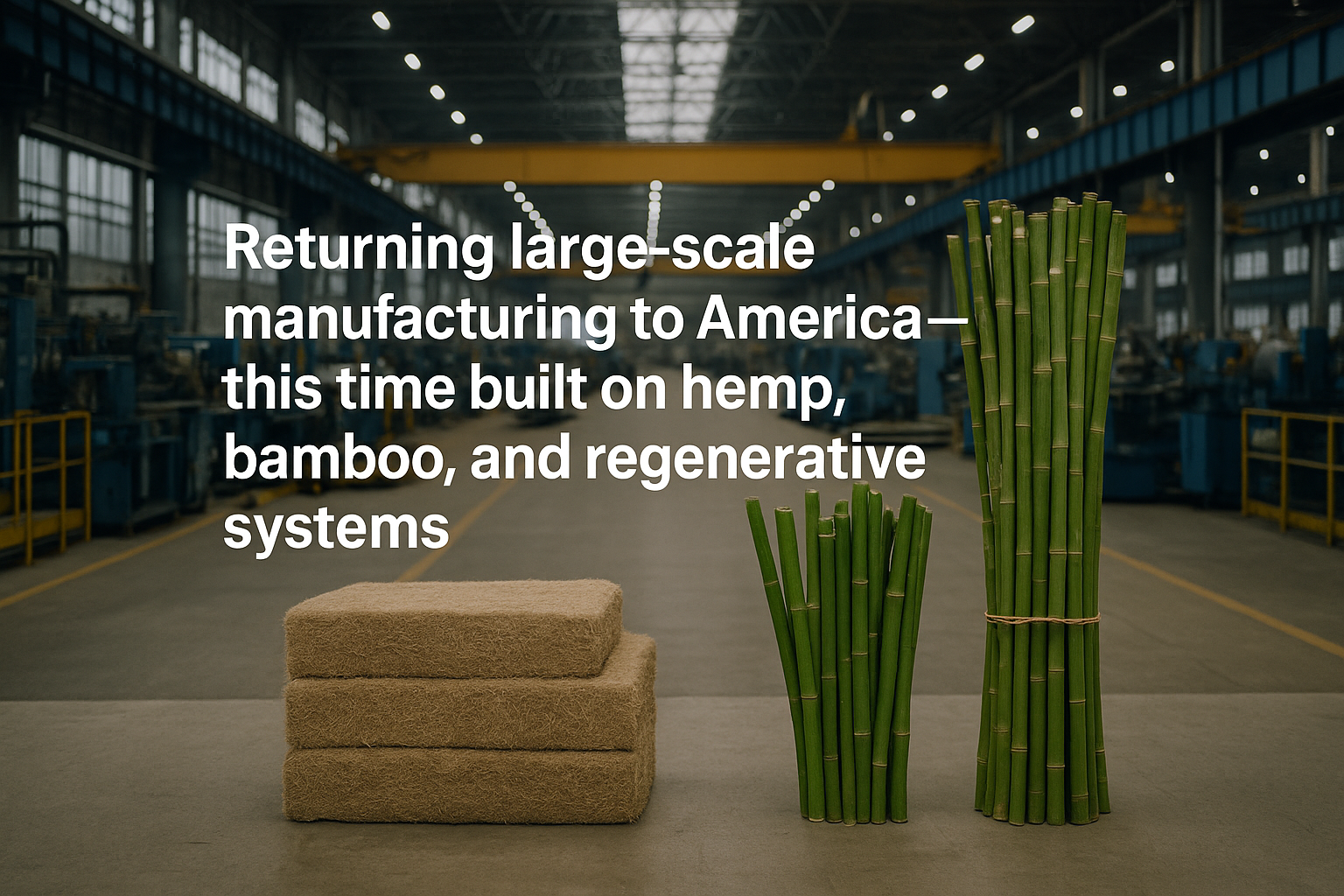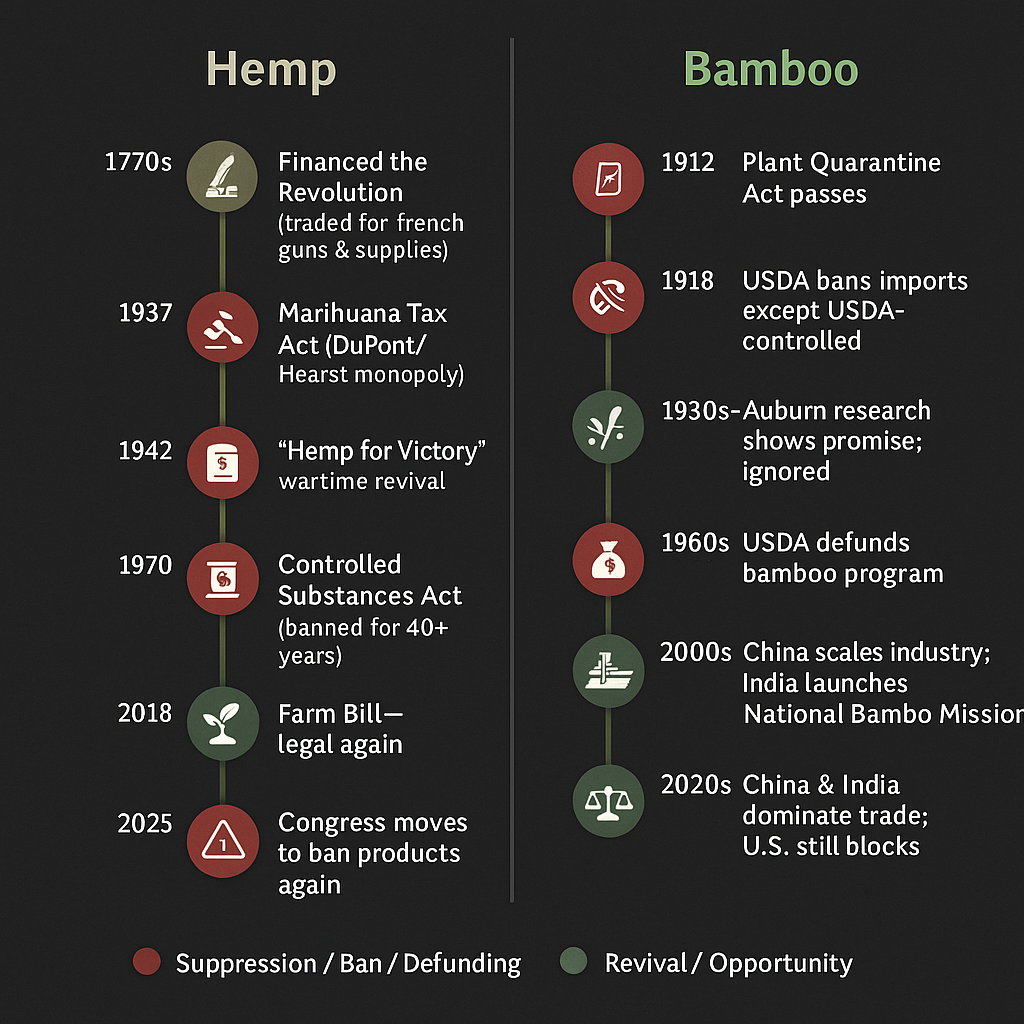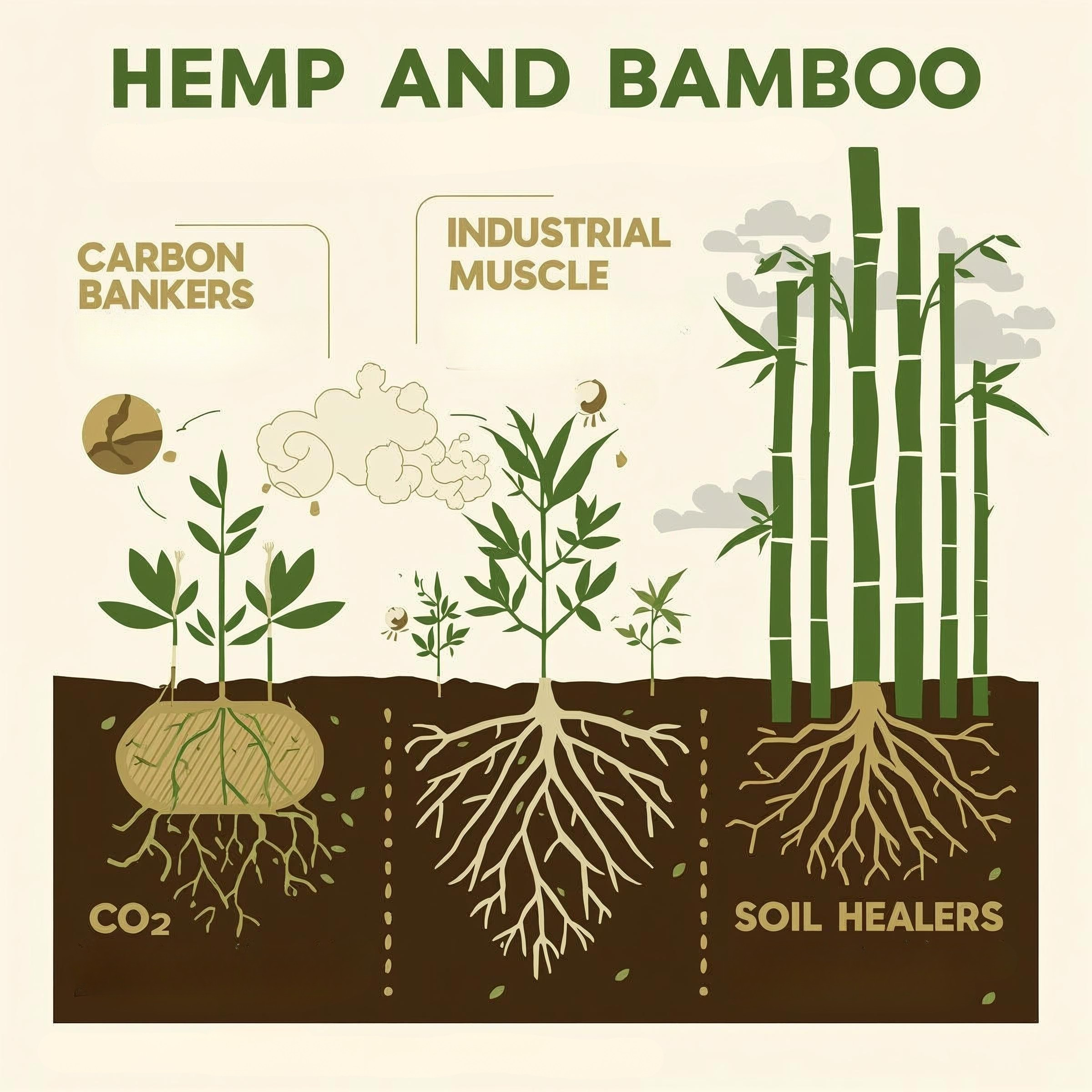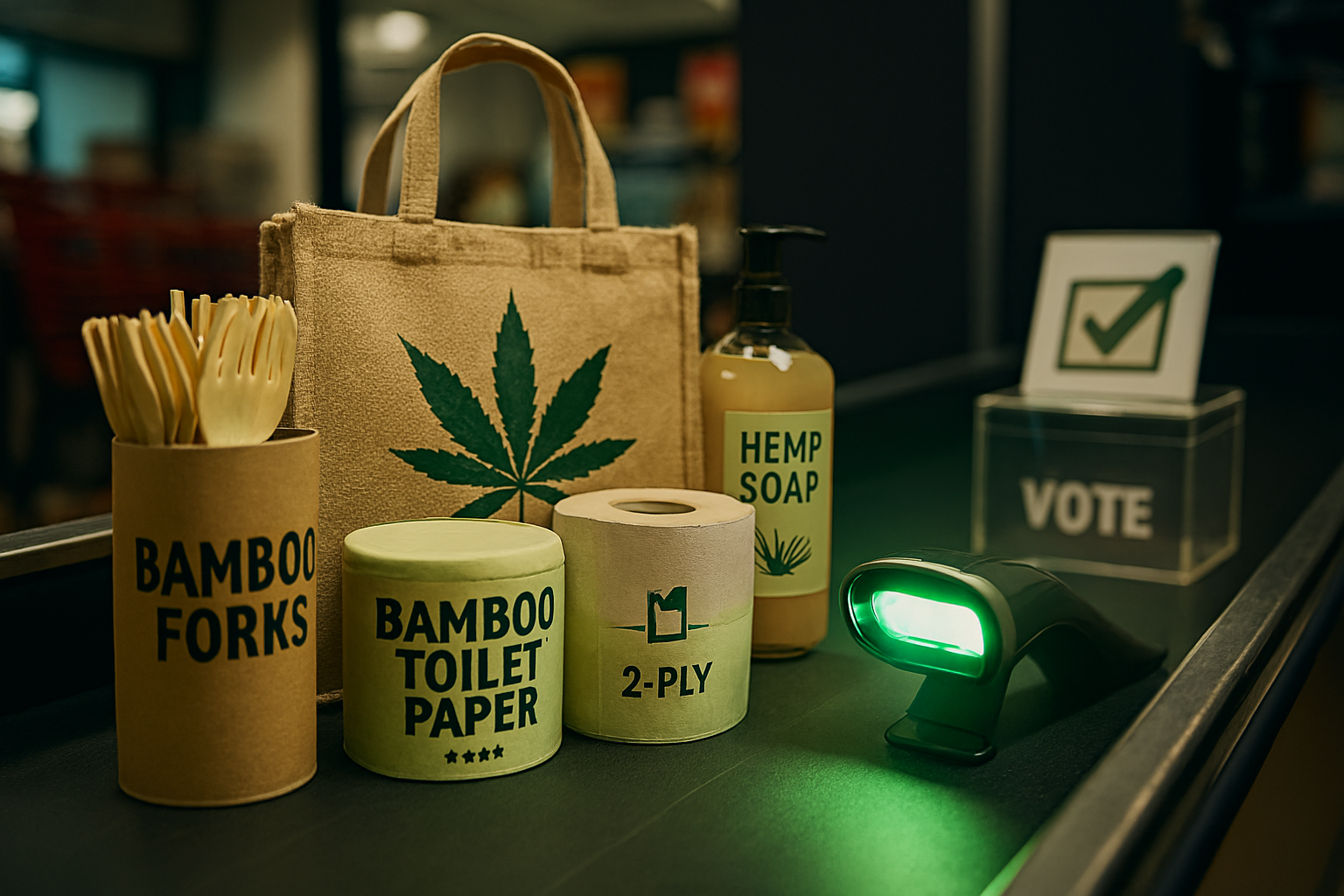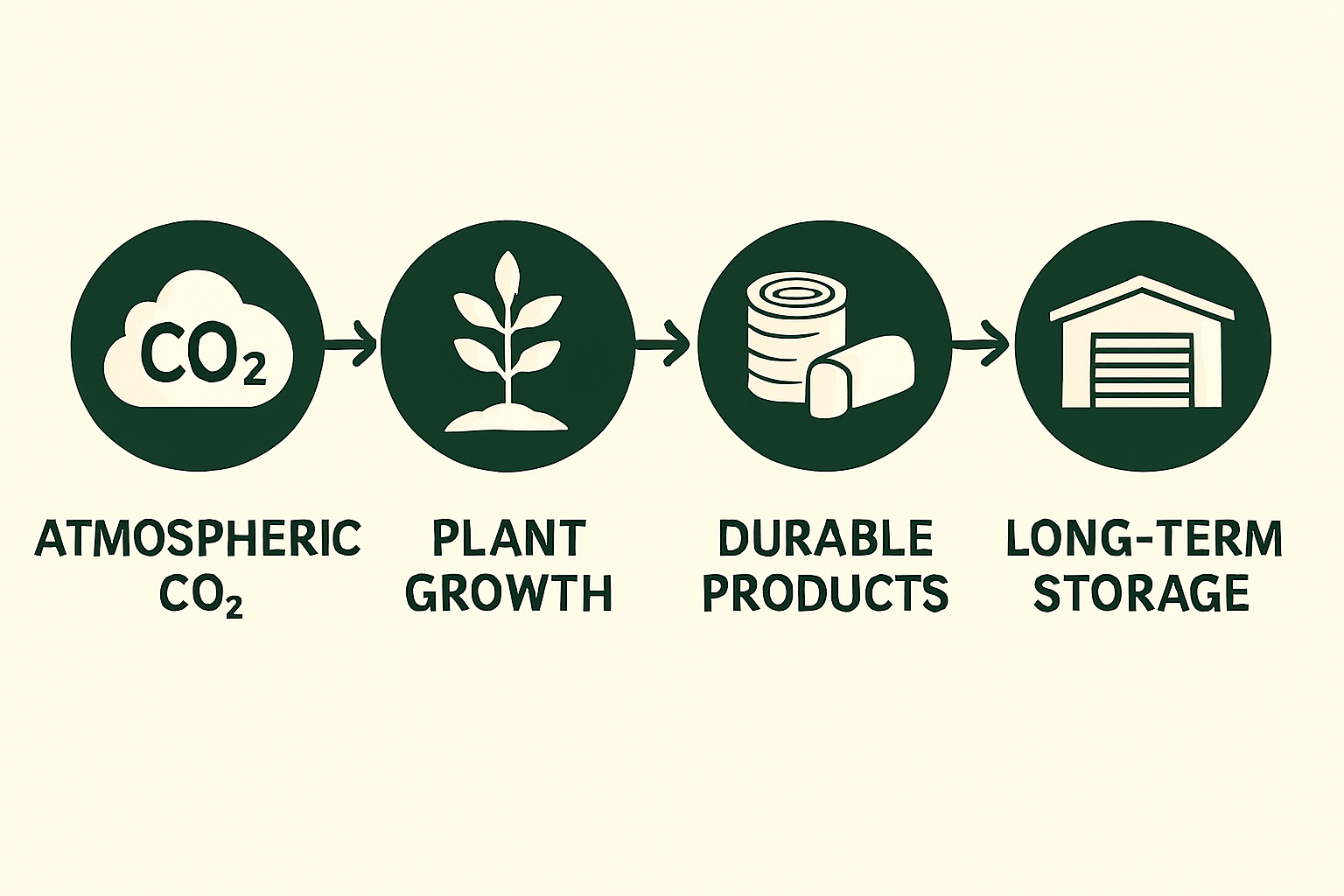Hemp & Bamboo: The Super-Fibers They Tried to Bury
“If you want to measure a material’s power, look at the lengths taken to hide it.” — Evolution Mine: The Industrial Evolution
For more than a century, two of nature’s most capable raw materials, hemp and bamboo, were methodically pushed out of the industrial spotlight. That suppression is the clearest proof of their value. Faster harvests, stronger composites, lower embodied carbon: without a refinery.
The Quiet Choke-Hold
Industrial Hemp vs. Cotton & Petrochemicals
• Early 1900s: hemp threatened cotton planters and paper barons with faster growth and higher fiber yield.
• “Reefer Madness” laws blurred low-THC industrial hemp with narcotics, killing the crop.
• DuPont’s nylon and other petro-plastics were launched just as hemp was outlawed—a well-timed clearing of the field.
Bamboo’s Quarantine
• U.S. import restrictions and strict plant quarantines slowed commercial bamboo development for decades.
• Timber and plastic producers enjoyed an uncontested market while one of the fastest-renewing plants on earth sat on the sidelines.
These moves—documented in the Wall of Evidence and explored in Evolution Mine—were strategic moat-building, not accidents.
Why the Threat Was Real
Rapid Renewal: Hemp matures in about 120 days; established bamboo groves can be harvested annually.
Carbon Bankers: Both capture more CO₂ per acre than most trees and lock it inside long-lived products.
Industrial Muscle: Natural-fiber composites rival glass fiber for stiffness at a fraction of the weight and energy.
Soil Healers: Deep roots stabilize and detoxify soil with far less chemical input than cotton or timber.
Markets Already Moving
Construction: insulation panels, structural boards, interior cladding.
Mobility: automotive door cards, scooter decks, e-bike frames.
Consumer & Packaging: molded trays, cosmetics housings, appliance casings.
Energy Infrastructure: non-conductive trays and housings for batteries and solar arrays.
The Numbers
Ten-fold timber yield: bamboo can produce up to 10× more usable material per acre than traditional timber.
Carbon math: well-managed hemp and bamboo products can be net-negative in embodied carbon—storing more than they emit.
Industrial scaling: one hemp crop per season can feed thousands of auto panels or hundreds of homes’ worth of insulation.
Why It Matters Now
Petrochemicals start as a carbon liability.
Hemp and bamboo start as a carbon asset.
For small and midsize manufacturers, the opportunity isn’t hypothetical—it’s a supply chain waiting to be rebuilt.
The moat is no longer oil wells; it’s documentation, traceability, and reliable delivery.
Next Steps
Now We Evolve is helping build a parallel supply chain:
decortication → fiber mats → composite manufacturing → finished goods.
Pilot products already on the drawing board include building panels, automotive interior kits, and molded packaging.
Call to Action
Explore the Wall of Evidence for the primary sources behind this history.
Pre-register with the Buyer Bloc to signal demand for first-wave hemp and bamboo products.
Read Evolution Mine: The Industrial Evolution for the full story of how these two super-fibers were buried—and how we’re bringing them back.
Read the full story in the book.
Evolution Mine: The Industrial Evolution—the blueprint for breaking the petrochemical playbook and building a regenerative economy.
👉 Buy on Amazon

